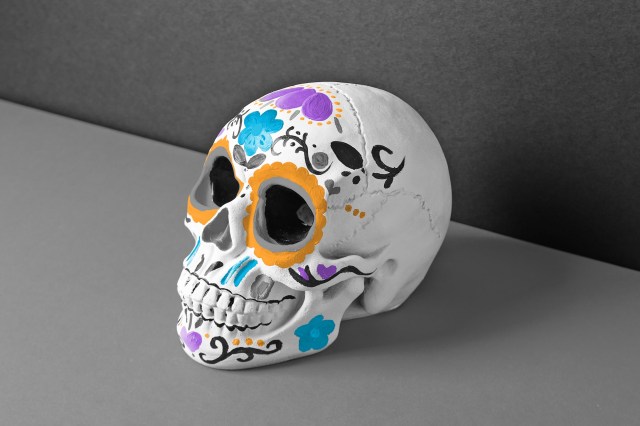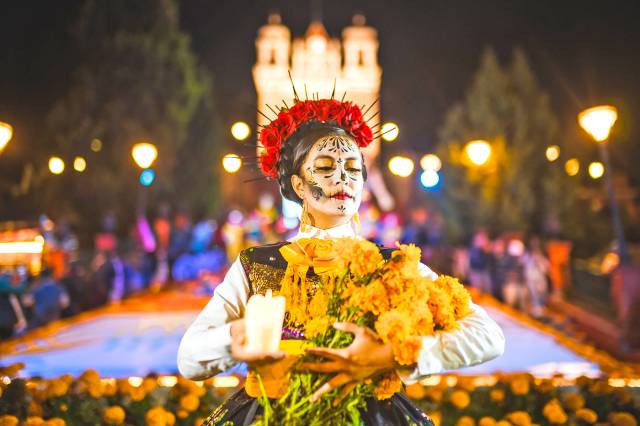
It’s Not Quite Mexico’s Version of Halloween
Despite its famous skull and skeleton imagery — and the fact that it’s celebrated very close to October 31 — the Day of the Dead isn’t the same as Halloween. Rooted in ancient Mesoamerican traditions and observed primarily on November 1 and 2, Día de los Muertos is a joyful celebration of life and death that honors deceased loved ones.
The holiday wasn’t widely celebrated by Latinos in the U.S. until the 1970s and 1980s; around this time, artists and activists introduced the tradition to their communities as part of the Chicano movement, which promoted Mexican American heritage and empowerment. As the holiday became more visible in the U.S., its similarities meant it often got lumped in with spooky season, and in recent years, the holiday has indeed begun adopting certain Halloween traditions.
Children celebrating in Mexico now often dress up in costumes and go trick-or-treating during the week leading up to the Day of the Dead, and the festive decor has started incorporating cobwebs, witches, and pumpkins. As the holiday continues to make room for new traditions such as candy and creepy stuff, the Day of the Dead remains a distinct cultural celebration that goes beyond spooky aesthetics, ultimately celebrating life in death.
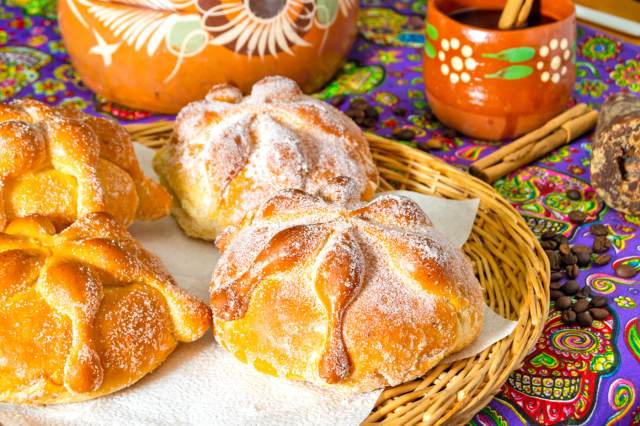
A Special Kind of Bread Is Made for the Deceased
An essential part of Day of the Dead celebrations are the ofrendas, or altars, that families set up to honor the spirits of deceased loved ones. The ofrendas typically feature multiple tiers representing heaven, Earth, and purgatory. Candles light the way for spirits returning to the living world, while a special Mexican sweet bread known as pan de muerto, or bread of the dead, awaits the hungry souls of the dearly departed.
The bread is similar in texture to challah breads, flavored with anise and orange, and usually coated with sugar — it’s sometimes even made in the shape of little skulls. By the time the holiday is over, the bread is said to have no smell or taste left to it; the dead have supposedly eaten it all.
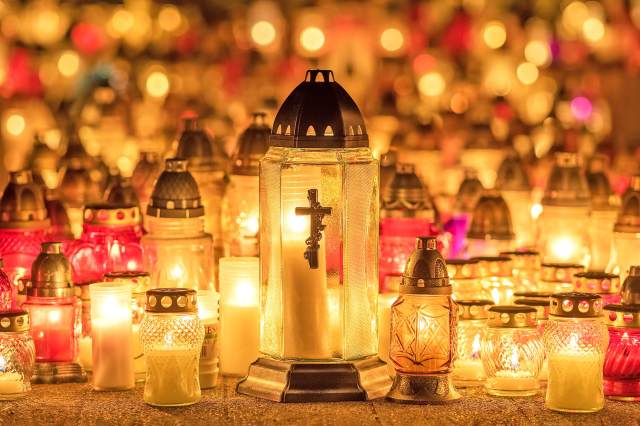
There’s a Day for Children and a Day for Adults
Although it’s known as the Day — singular — of the Dead, there are in fact two distinct days in the celebration. The first day, November 1, is also known as Día de los Angelitos (Day of the Little Angels) and is dedicated to remembering and celebrating children who have departed. The second day, November 2, focuses on receiving the souls of deceased adults. The two celebrations don’t differ much aside from the offerings left on the ofrenda: In addition to the standard sugar skulls, candles, and food, toys may be offered up on the children’s day, while older family members may be remembered with other favorite personal items such as a piece of clothing or an offering of alcohol.
More Interesting Reads
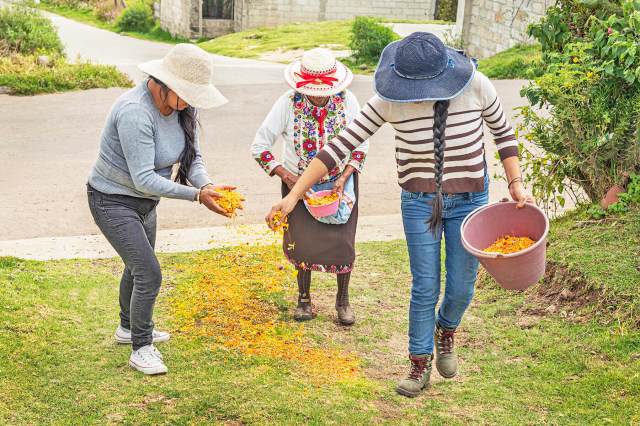
Marigolds Are Used To Attract the Deceased
Of the many colorful Day of the Dead traditions, the marigold flower shines as not only one of the most vibrant, but also one of the most crucial. Marigolds are traditionally known as cempasúchil in the Aztec language Nahuatl; the word means “twenty flower” and is taken from the many defined petals of the native Mexican plant.
Marigolds bloom in abundance across Mexico throughout October and November and have been used for decorative and medicinal purposes as far back as the Maya and Aztec civilizations. During Day of the Dead preparations, families arrange the flowers’ bright orange and yellow blossoms in intricate patterns on ofrendas and at gravesites. They’re more than just a pretty decoration, though — marigolds’ strong, musky scent is believed to beckon the spirits and help guide them along their journey back home.
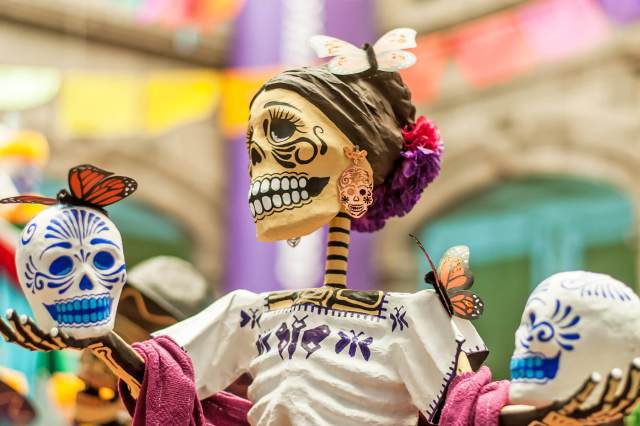
Hairless Dogs and Monarch Butterflies are Important Day of the Dead Critters
The most identifiable Day of the Dead imagery may be the painted sugar skulls and sunny marigolds, but they’re not the holiday’s only significant symbols. A breed of hairless dogs known as Xoloitzcuintli, or Xolos, hold a special place in Mexican culture and are often featured in the celebrations. It’s not unusual to see them draped in flowers and wearing sugar skull costumes. The ancient pup gets its name from two Aztec words: Xolotl, the god of lightning and death, who was believed to guide souls through the underworld, and itzcuintli, meaning dog. Like its namesake, the Xolo is believed to help guide returning spirits for the holiday — a loyal companion in both life and death.
The magnificent monarch butterfly also makes its presence known on this momentous occasion. As the orange-and-black beauties migrate south each year, their arrival in Mexico coincides perfectly with the Day of the Dead celebrations. The Aztec people have long held butterflies in high regard, viewing them as the souls of fallen warriors. Today, the winged creatures are believed to be vessels for the souls of the departed, returning home to celebrate with their beloved families.

